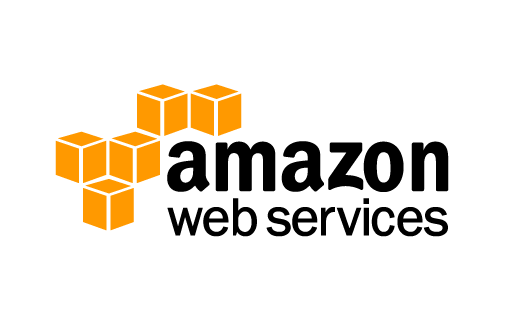Amazon Web Services Certification In Pune
AWS Certification Pune helps learners build credibility and confidence by validating their cloud expertise with an industry-recognized credential and organizations identify skilled professionals to lead cloud initiatives using AWS. We’ve made it easier for you to prepare for AWS Certification exams with seven new on-demand Exam Readiness courses—built by Sysap technologies.
Fill the form & get free demo session
Contact Us
ABOUT AMAZON AWS
Amazon AWS is a computing platform recognized all over for its cloud based services and applications. Amazon AWS services began in 2006 and since then these services have been known for the most effective remote or distant cloud based services. Amazon Web Services, with its exclusive features such as high storage, low-cost computing, high-performance databases, have managed to become the top most need of many business houses, non-profit organizations or individuals. Amazon AWS Training can give you a complete exposure to this technology and it’s usage.

AMAZON AWS TRAINING & CERTIFICATION
AWS Certification Training will empower you with the niche skills that every AWS certified professional enjoys. The course is comprehensive and is a detailed account of the AWS technology and how it is used to create the most powerful cloud-based solutions. The training focuses on AWS storage, its computing and networking powers. This hands-on training will make you master the skills of designing and developing cloud based applications using AWS.
AFTER THE AMAZON AWS TRAINING, YOU MAY SPECIALIZE IN THE FOLLOWING DOMAINS & MAY TARGET THE MOST INFLUENTIAL JOBS IN AWS
- AWS Certified Solutions Architect – Associate
- AWS Certified Solutions Architect – Professional
- AWS Certified Solutions Developer Associate
- AWS Certified SysOps Administrator Associate
- AWS Certified DevOps Engineer Professional
- AWS Certified Advanced Networking Speciality
- AWS Certified BigData Speciality
WHAT WILL YOU LEARN IN THE AMAZON AWS CERTIFICATION TRAINING COURSE?
- You will learn to design & deploy fault tolerant systems on AWS
- You will learn to ingress & egress data in AWS
- You will have appropriate knowledge of AWS architecture & distributed systems on AWS
- You will be efficient in handling the AWS-based application
- You will have no difficulties in deploying hybrid systems & AWS components
Apart from this, you will have the following benefits:
- Hands-on training sessions with practical examples
- Live projects with Lab assistance
- Placement Opportunities and Career Enhancement Programs
- Certificate Preparation for AWS Certified Solutions Architect – Associate,AWS Certified Solutions Architect – Professional, AWS Certified Develo
What You'll LEARN ?
Upon the completion of our AWS students will know how to:
- What is cloud computing?
- Models of cloud computing
- Basics of AWS
- Services of AWS
- AWS Management Console
- AWS Architecture
- Setting up AWS Account
- Amazon Amis
- Defining Elastic Compute Cloud
- Launching an AWS EC2 instance
- Hosting a website on AWS EC2
- What is Putty?
- Using Credentials and Roles for AWS CLI
- Installation of PHP for EC2
- Advanced features of EC2
- Setting up EBS storage architecture
- AWS Storage
- Concept of AMI & Snapshots
- AMI Creation
- Amazon EC2 & EBS
- Amazon EBS: Backup & Restore
- EC2 Services
- EBS Persistent Storage
- Amazon Storage Services
- Glaciers, S3, RRS
- Amazon S3: Version Control , Lifecycle Management & Glacier
- Creating CDN and S3 Bucket
- Snowball and CORS Configuration
- Learning of S3 Deep Dive
- Amazon Cloud Watch
- Monitoring AWS Resources
- Setting up Alerts
- Notifications for usage & billin
- What is Scaling?
- Analysing Load Distribution Techniques
- Amazon Scaling Service: ELB and Auto Scaling
- VPC – Virtual Private Cloud
- VPC: NAT – Network Address Translation
- VPN and Peering
- Creating VPC and Access Control Lists (ACLs)
- VPC and VPC flow logs
- Amazon IAM Overview
- Terminology of IAM
- Distribution of Access Control
- Using IAM in Distribution
- Identity Federation
- What are Access Keys and Security Credentials?
- Relational Database Service – RDS
- Backups and Replicas of RDS
- Management and Maintenance of RDS
- AWS NoSQL Service – Dynamo DB
- How to create DynamoDB tables and indexes?
- DynamoDB: Scan vs Query API Calls
- DynamoDB: Access
- Control and Data Migration
- AWS Services
- Life Cycle of AWS Resources
- DevOps Model
- Email Service of AWS
- Content Distribution Service
- AWS Cloud Front
- AWS Import/Export
- AWS Product: Elastibean Stalk
- What is Lambda and Kinesis?
- Cloud Formation
- AWSOps Works SNS
- SES
AWS ARCHITECTURE & DESIGN
- AWS Backup & DR Setup
- AWS Calculator & Billing
- Cost Planning
- Optimization Techniques
- AWS Security Best Practices
- High Availability in AWS
- Disaster Recovery in AWS
- Basics of Route53 & DNS
- Different types of Routing Policy Lab
- Simple Queue Service & Simple Workflow Service
- What is Simple Notification Service?
- Creating SNS, SQS & SWS
